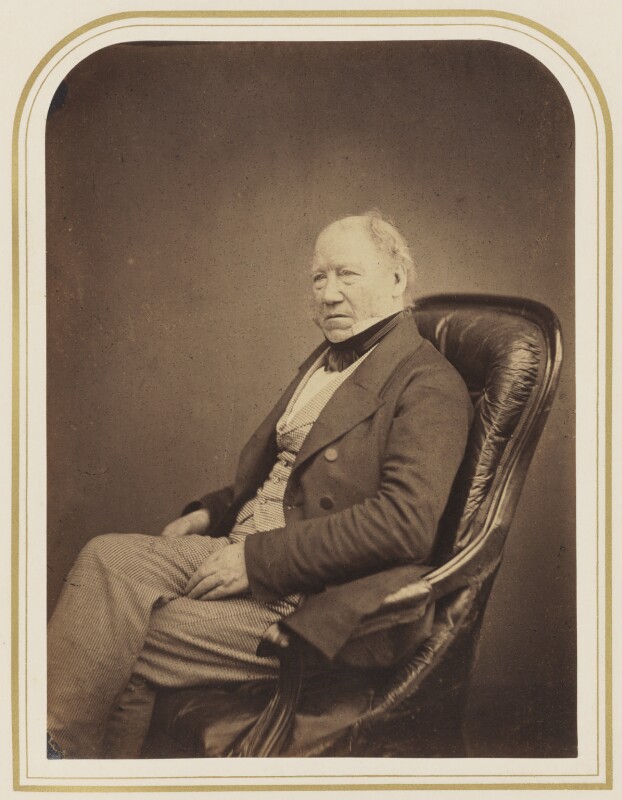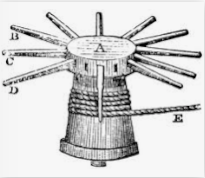PLEASE NOTE: Unless otherwise referenced, all definitions are from Admiral Symth’s The Sailor’s Word Book (described below)
Admiral William Henry Smyth. (B 21 January 1788: D 8 September 1865) KFM (Fellow of the Illustrious Royal Order of Saint Ferdinand & Merit), DCL (Doctor of Civil Law), FRS (Fellow of the Royal Society), FRAS (Fellow of the Royal Astronomical Society), FRGS (Fellow of the Royal Geographical Society), FSA (Fellow of the Society of Antiquaries of London) Smyth first served in the Merchant Navy in 1804 onboard an East India frigate the Cornwallis. Symth joined the Royal Navy in 1805 when the Royal Navy entered this ship in their books. W.H. Smyth joined the navy’s Hydrography Department in 1813, and took part in a survey of the waters around Sicily. He retired from the navy in 1858. Admiral Smyth began his introduction to The Sailor’s Word book with the question, “What’s in a word?” Indeed!

BOATSWAIN (usually shortened to B’os’n [pronounced Bōsun]
“The officer who superintends the boat-sails, ship’s-sails, rigging, canvas, colours, anchors, cables and cordage, committed to his charge. He ought also to take care that blocks and running ropes are regularly placed to answer the purposes for which they are intended, and that the sails are properly fitted to their yards and stays, and well-furled or reefed when occasion requires. He pipes the hands to their several duties, seeing that they attend his call, and ought to be in every way a thorough seaman. Although termed boatswain, the boats are not in his charge. They, with the spars, etc, and stores for repair, belong to the carpenter. The boatswain is the officer of the 1st lieutenant; he gives no order, but reports defects, and carries out the will of his superior.”
BOATSWAIN’S MATE [Bo’s’n’s Mate] “[He] is an assistant to the boatswain, who had the peculiar command of the long-boat. He summons the watch or crew by his whistle [called the ‘bo’s’n’s call’] and during his watch looks to the decks, and has peculiar [particular] calls for “grog”, “’bout ship”, “pipe to breakfast”, sweepers”, etc.”
CAPSTAN: A mechanical device to haul or lift very heavy items, like the anchor. “They have a circular head, which has square holes around its edge, and in these long bars are shipped…beneath is a perpendicular barrel, round which is wrapped the rope or chain used to lift the anchor or other great weight, even to the heaving a ship off a shoal…The purchase or lifting power is gained by the great sweep of the bars. A perpendicular iron spindle passes through the whole capstan, and is stepped into a socket on the deck below the one on which it stands. In some cases capstans are double in height, so that the bars may be worked on 2 decks, giving more room for the men.” [or women these days!] I found the following image, but I do not recall any capstans I’ve known to have the line so high. You would have to jump over it! Since keeping momentum and rhythm are essential to working a capstan I can’t imagine this one was very successful!

FOLLOWERS: (not the people waiting everyday to see what you post on Facebook) A certain number of [men]* permitted by the regulations of the service to be taken by the captain when he removes from one ship to another. Also, the young [gentlemen]* introduced into the service by the captain, and reared with a father’s care, moving with him from ship to ship; a practice which produced most of our best officers formerly, but innovation has broken through it, to the serious detriment of the service and the country.
[The training of officers gradually moved from this system to training colleges, such as that at Greenwich. If you had a very good captain you received good training, but it was a bit of the luck of the draw. What is particularly interesting about this definition in the Sailor’s Word Book is how political it is! This is very rare in this type of publication.]
I placed the two asterisks above because the gender-specific references are no longer valid.
FORECASTLE [Fo’c’sle pronounced folk-sill] “Once a short deck placed in the fore-part of a ship above the upper deck; this usually terminated, both before and behind, in a vessel of war by a breastwork, the foremost part forming the top of the beak-head, and hind part, of the fore-chains. It is now applied in men-of-war to that part of the upper deck forward of the after fore-shroud, or maintack-block, and which is flush with the quarter-deck and gangways. Also, a forward part of a merchantman under the deck, where the seamen live on a platform.
GROG
“A drink issued in the navy, consisting of 1 part of spirits diluted with 3 of water…as the water onboard in olden times was very unwholesome it was necessary to mix it with spirits…”
Our Facebook friend, Martin, added this: “A small item of additional knowledge – you have described how ‘Grog’ was concocted (1 rum to 3 water to deal with the putrid water problem), but where does the word ‘Grog’ actually come from ? Answer -Admiral Vernon of the Royal Navy was nicknamed ‘Old Grog’, as he preferred to wear a grogram cloak. T’was Admiral Vernon who strongly opposed his men being given their Navy Rum ‘neat’, as he considered that to do so undermined on board discipline due to ..”the swinish vice of drunkenness”. So, using his Admiral’s authority, on 20 August 1740 he ordered that in future the mens’ daily Navy Rum ration be diluted with two parts of water to one of rum, and that lime juice and sugar also be added to make it more palatable. The old tars, by then long accustomed and coveting their daily full strength Navy Rum, were most upset and derisively nicknamed it, ‘Grog’. Believe It Or Not. PS Good Health & Happiness For This Festive Season – And Far beyond. ..MartyK, New Zealand.”
NELSON’S BLOOD When I crewed on a tall ship I led the sea shanties we used when hauling and heaving. Although sea shanties were used in the merchant navy, and not in the Royal Navy, we bent the rules on Bounty. When we were heaving at the capstan (see definition above) I used to lead with the great capstan shanty Roll the Old Chariot Along. This begins with the line “Oh a drop of Nelson’s blood wouldn’t do us any harm”. This was referring to the rum ration. Using the term Nelson’s blood for rum can be traced back to…”…the story of Lord Horatio Nelson and the Battle of Trafalgar in 1805. During the fight, Nelson was fatally wounded and according to legend his men preserved his body in a barrel of rum. Finding that it had restorative qualities on the body, his men drilled holes into the barrel and drank the spirit, imbibing ‘Nelson’s Blood’ for courage and long life. In reality, Nelson’s body was transported back to England in liquor, though the container was said to contain myrrh, campor and brandy as well. It’s highly unlikely that anyone drank the stuff…” From the RumRation.WordPress.com.
THE SAILOR’S WORD BOOK “An Alphabetical Digest of Nautical Terms, including some more especially military and scientific, but useful to seamen; as well as archaisms of early voyages etc.” Published in 1867, it was written by Admiral William Henry Smyth. KFM DCL FRS FRAS FRGS FSA The dictionary was revised and edited first by his family after his death, then Vice-Admiral Sir Edward Belcher completed the final revision and edit. This massive work is currently available from Conway Maritime Press as a reprint in 1991.